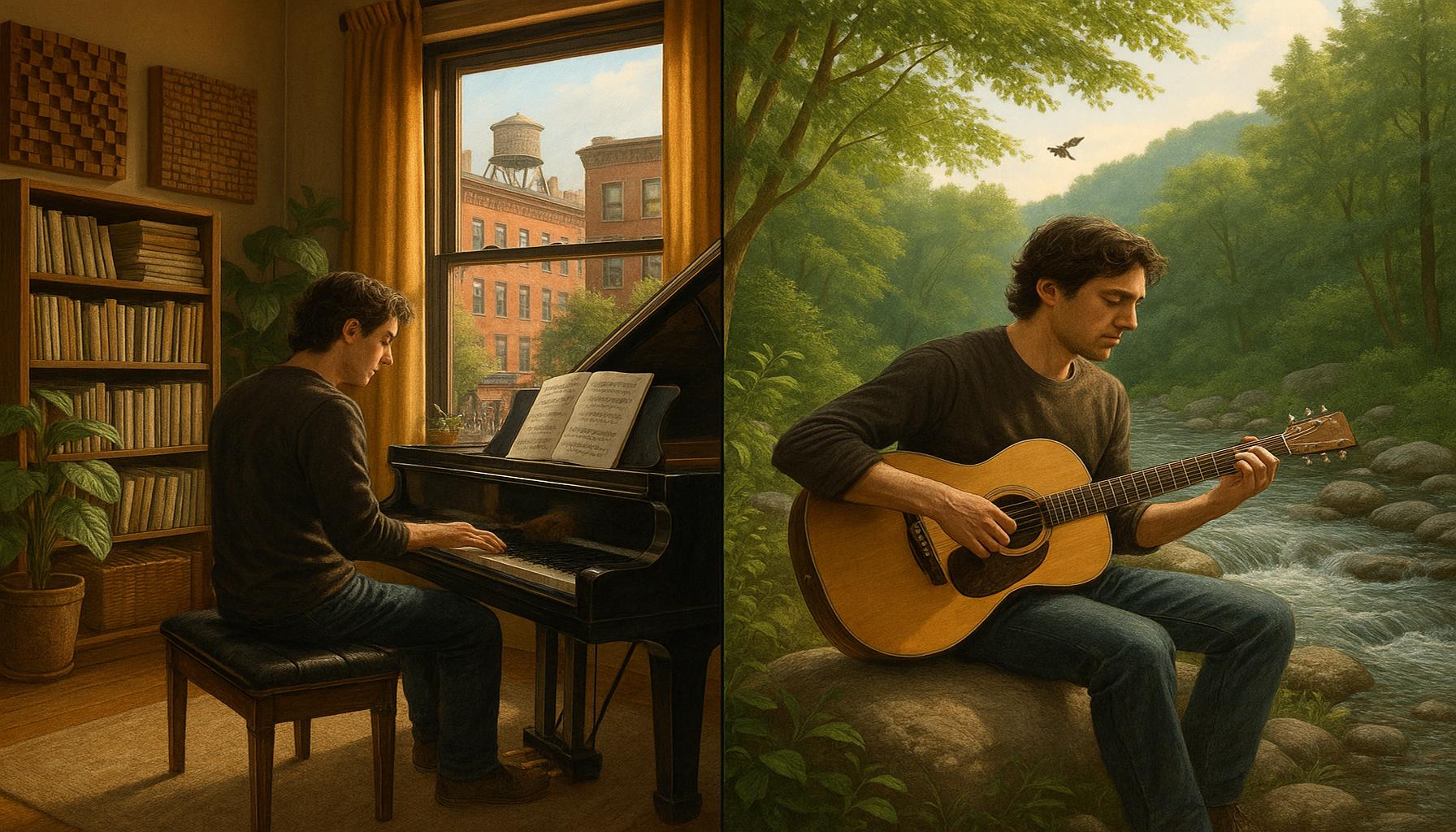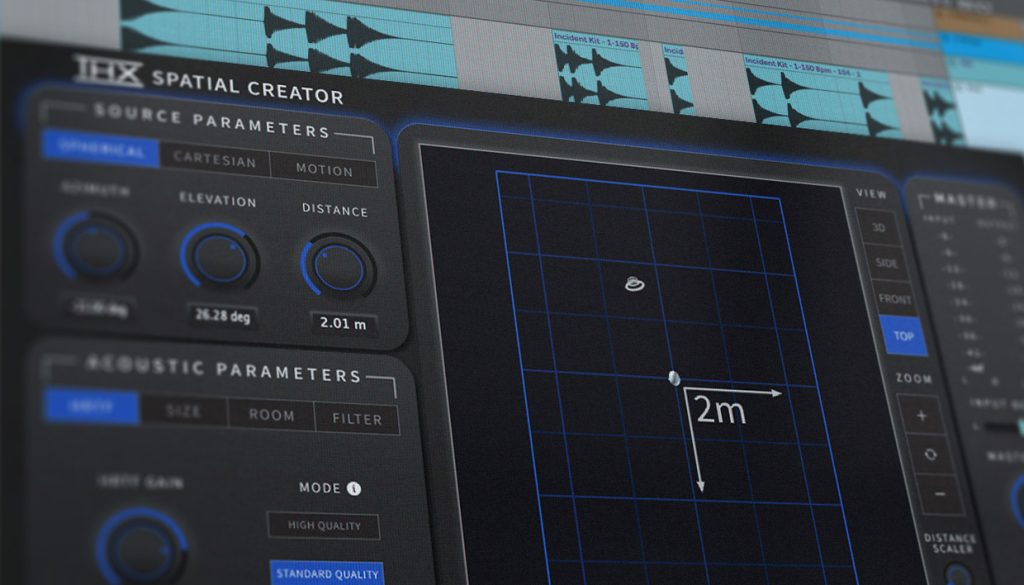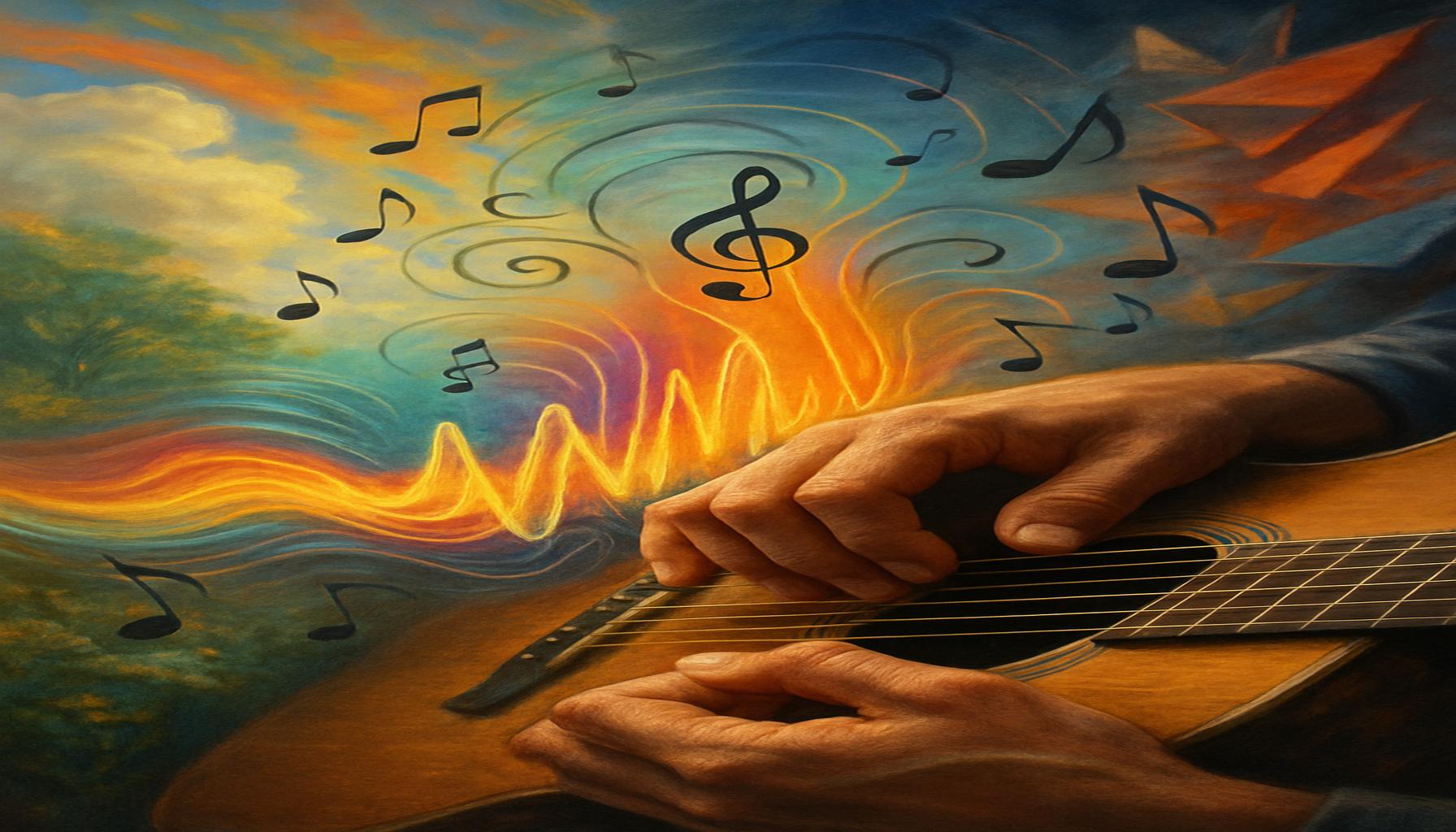The Influence of the Sound Environment on Creativity: How Different Spaces Affect Musical Composition

Understanding the Intricacies of Sound Environments
The interplay between sound environments and creativity forms a captivating tapestry where musical expression is deeply woven with the fabric of physical surroundings. Every space possesses unique acoustic characteristics that can profoundly influence how musicians create. By examining the auditory qualities of different environments, one can unearth new depths of artistic inspiration, leading to the evolution of dynamic compositions that resonate with their specific context.
Key Factors of Sound Environments
- Architectural design: The structure and materials of a space dictate its sonic properties. For instance, the expansive ceilings of a concert hall create a rich, reverberant sound that enhances orchestral music, while a cozy studio with soundproofing may foster introspective songwriting by minimizing distractions.
- Ambient noise: The backdrop of a musician’s environment can elicit various emotional responses. The gentle rustling of leaves in a forest or the rhythmic crash of ocean waves can inspire calm, reflective compositions, whereas the bustling noises of metropolitan life often spur more frenetic, energetic creations. These contrasting environments invite musicians to capture the essence of their surroundings in their work.
- Room acoustics: The sonic qualities of a room—such as how sound travels and is absorbed—can enhance or stifle creativity. A room that amplifies sound may encourage bold experimentation, while one that dampens it might be ideal for composing intimate ballads.
Choosing a suitable creative space is a common pursuit among musicians. For example, consider a musician composing a new piece in a grand theater versus a small, dimly lit café; these distinct venues yield divergent creative outcomes. The grandeur of a theater may inspire sweeping orchestral arrangements, while the hospitable ambiance of a café could lead to the birth of delicate, heartfelt melodies.
Notable Examples Around the U.S.
- The vibrant streets of New York City serve as a dynamic urban soundscape, infusing works like those of jazz musicians with the pulse of the city—horns honking, voices blending, and subway trains rumbling underground.
- The tranquil sounds of national parks, such as the whispering winds of Yosemite or the bubbling brooks of Yellowstone, can evoke soothing melodies that reflect the beauty and serenity of nature.
- Iconic venues like The Apollo Theatre in Harlem not only provide a stage but also carry layers of cultural history, inspiring musicians to weave elements of this rich legacy into contemporary compositions.
Diving deeper into the connection between musical composition and the surrounding sound environment reveals an intricate relationship. Musicians are encouraged to explore how their physical and acoustic spaces affect their artistic output, cultivating a richer, more informed approach to their craft. With mindful consideration, artists can harness their environments to elevate their compositions, ultimately leading to new sounds and experiences in the world of music.
DISCOVER MORE: Click here to dive into the world of ethnic cuisine
The Role of Sound Variations in Musical Composition
The impact of sound variations within different environments cannot be overstated when it comes to shaping the creative process of musicians. From the subtle echoes of a cavernous hall to the crisp clarity of a home studio, each environmental aspect contributes to the emotional and artistic outcomes of musical compositions. By delving into these nuances, musicians can better understand how to harness their surroundings to cultivate their creativity.

The Emotional Resonance of Space
Musical spaces possess unique emotional resonances that can either liberate or constrain creativity. For example, the mighty halls of symphony orchestras are designed to maximize sound projection and reverberation. This architectural phenomenon not only enhances the listening experience but also fuels the creative aspiration of composers who wish to take full advantage of the amplified acoustics. In contrast, a home-based workspace can offer a sense of comfort and safety, allowing for trial and error without external judgment. Each venue cultivates a different mood, influencing how musicians approach their craft.
Exploring Diverse Sound Environments
- Natural Surroundings: Composing amidst nature, such as a serene lakeside or a tranquil forest, can profoundly affect the feelings embedded within a musician’s work. The ambient sounds of chirping birds, rustling leaves, and flowing water create a peaceful backdrop that often invites introspection, encouraging mindfulness in musical expression.
- Urban Landscapes: In environments rich with human activity—think busy streets or bustling cafes—musicians are often inspired by the cacophony of city life. The blending of voices, vehicle sounds, and bustling energy tends to produce vibrant and dynamic compositions that often mirror the rhythm of urban experiences. The unpredictability of city life can be a catalyst for spontaneity in musical creation.
- Historical Venues: Performing or composing in spaces steeped in history, like a vintage jazz club or a legendary music venue, can also serve as a powerful source of motivation. The vibrations of past performances echo within these walls, serving as a form of creative inspiration and inviting modern musicians to integrate traditional elements into their compositions.
The dynamic range of sound across diverse environments allows artists to explore a spectrum of musical forms and styles. Many times, it is this very exploration that leads to innovation, transforming raw inspiration into composed pieces that reflect the nuances of their surroundings. As musicians continue to seek out the ideal sound environments, they draw on their experiences and interactions with the acoustic characteristics around them. Understanding and embracing these diverse soundscapes can redefine an artist’s approach, ultimately shaping the future of their creative endeavors.
The Importance of Acoustic Spaces
The acoustic qualities of a space can significantly shape the creative processes of musicians. Different environments not only affect how sound is perceived but also influence the way artists compose and perform. For instance, wide-open spaces can lead to a sense of freedom and ephemerality in music, potentially inspiring experimental compositions. In contrast, acoustically treated rooms in recording studios can enhance clarity and detail, pushing musicians to explore intricate arrangements.
Nature vs. Urban Soundscapes
Musical compositions often draw inspiration from the immediate sound environment. Natural settings, such as forests or rivers, offer a calming backdrop that can foster introspection and delicate melodies. Research indicates that these soundscapes can stimulate creativity by inducing relaxed mental states. Conversely, urban environments permeated with traffic noise and bustling crowds can evoke a sense of urgency and innovation, leading to dynamic and eclectic musical styles. This reflects the adaptive nature of creativity in response to one’s surroundings.
Spatial Awareness in Composition
Furthermore, the spatial arrangement of musicians influences their collaborative efforts. Studies show that physical space impacts musical interaction, with performers in circular setups fostering greater engagement than traditional linear formations. This change in spatial dynamics can lead to more cohesive group compositions, as musicians become more aware of each other’s sound and style.
The Role of Technology
Advancements in technology allow musicians to transform any space into a creative playground. With the use of virtual reality and immersive sound installations, composers can manipulate their environments in real time, inspiring unprecedented auditory experiences. Such innovations open avenues for experimentation, enabling artists to tap into the layered complexities of sound.
| Category | Details |
|---|---|
| Acoustic Qualities | Different environments shape artistic expression. |
| Natural vs Urban | Inspires distinct musical styles and compositions. |
| Technology | Enables manipulation of soundscapes for creativity. |
Conclusion
The exploration of sound environments reveals that the interaction between these spaces and musical composition is profound. By understanding and harnessing the influence of various acoustic settings, musicians can enrich their artistry, driving the evolution of creativity in the realm of music. Whether through the natural world, urban settings, or innovative technology, the potential for creative expression remains boundless.
DISCOVER MORE: Click here to uncover the healing benefits of creative writing
Soundscapes as Catalysts for Creative Exploration
Soundscapes
The Power of Ambient Sound
Ambient sounds, often overlooked, can profoundly impact a musician’s creative process. The inclusion of found sounds— noises that occur in a natural environment—invites artists into a realm where everyday life intersects with art. For instance, a composer in a busy subway station might capture the rhythm of train wheels on tracks or the myriad voices blending into an urban symphony. This dynamic interaction with ambient music influences an artist’s choices, often catalyzing innovation in style and technique.
Research highlights how exposure to diverse acoustic environments can enhance creativity by providing unexpected stimulus. A study published in the journal *Psychological Science* suggests that moderate noise—such as that found in a cafe or street setting—can elevate creative thinking. Unlike the quiet of a soundproof studio, which may stifle creative flow, the lively hum of conversation and activity can contribute to a more engaged and open-minded approach to composition.
Variability of Spaces and its Creative Output
Different locations can also shape the time of day musicians choose to create. For example, many artists prefer composing at night when cities are quieter, leading to a reflective mood. Conversely, spaces alive with daylight and vibrant sounds can evoke feelings of joy and spontaneity that propel musicians to explore more dynamic, upbeat compositions. This variability of time and space highlights a relationship that is both intimate and reciprocal: the environment molds the creativity, and in turn, the created music reshapes the space in which it exists.
Case Studies and Real-Life Examples
- Beethoven’s Late Period: The great composer often retreated to rural spaces where he could escape the buzzing noise of urban living in Vienna. His late works, filled with lyrical beauty and emotional depth, were notably influenced by the tranquil soundscapes around him, showcasing the profound effect of peaceful environments on creativity.
- Brian Eno and Ambient Music: Known for pioneering the ambient music genre, Brian Eno explicitly uses environmental sounds in his compositions. His series, *Music for Airports*, was designed to interact with the airport’s ambient noise, creating a harmonious blend that redefined the acoustic experience of public spaces.
- Hip-Hop Producers: Many hip-hop producers today sample street sounds and urban environments to create authentic beats that resonate with listeners. By incorporating elements such as traffic horns, city chatter, and even wildlife, they share a sonic narrative that reflects their lived experiences and environments.
A musician’s surroundings are more than mere backdrops; they are active participants in the artistic process. By immersing themselves in various sound environments and drawing inspiration from these diverse experiences, artists can challenge their creative boundaries, ultimately leading to compositions that are rich in emotional and sonic depth. The exploration of different spaces beckons a newfound understanding of creativity, proving that sound and environment are inextricably linked in the world of musical composition.
DON’T MISS OUT: Click here to dive into eco-friendly crafting!
Conclusion: The Resonance of Space in Musical Creation
In examining the influence of the sound environment on creativity, it becomes evident that the spaces musicians inhabit profoundly affect their artistic output. From the ambient sounds that fill city streets to the serene quiet of a countryside retreat, each unique soundscape serves as a catalyst for inspiration and innovation. Musicians often find themselves navigating this intricate relationship, where their surroundings actively shape not only the themes and emotions of their compositions but also their broader artistic journeys.
As the case studies of renowned composers like Beethoven and modern artists such as Brian Eno showcase, the acoustic characteristics of a location can elicit varying degrees of creativity and emotional expression. Moreover, as research continues to reveal, exposure to diverse sound environments—whether lively or subdued—plays an essential role in stimulating creative thought processes.
Ultimately, as musicians open themselves up to the multitude of sounds surrounding them, they are better equipped to blend the richness of their experiences into their work. This understanding urges both creators and enthusiasts to pay closer attention not merely to the music itself but to the dynamic environments that give rise to it. Acknowledging the intricate ties between sound and space invites a deeper appreciation of the creative process, encouraging artists to explore the limitless potential that lies within the audible tapestry of their environments. In this way, the harmony of creation and environment continues to resonate, paving the way for future musical exploration.


